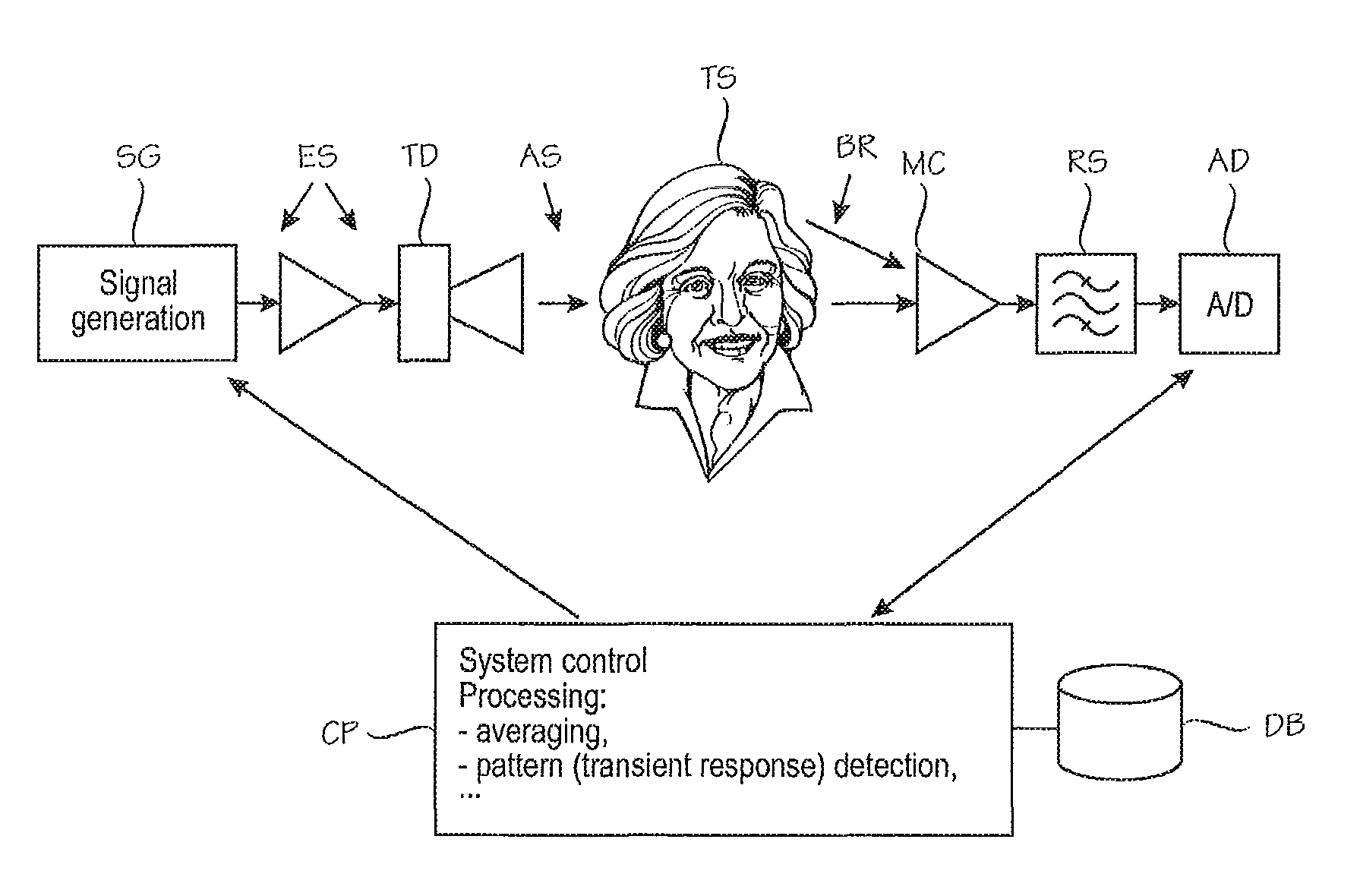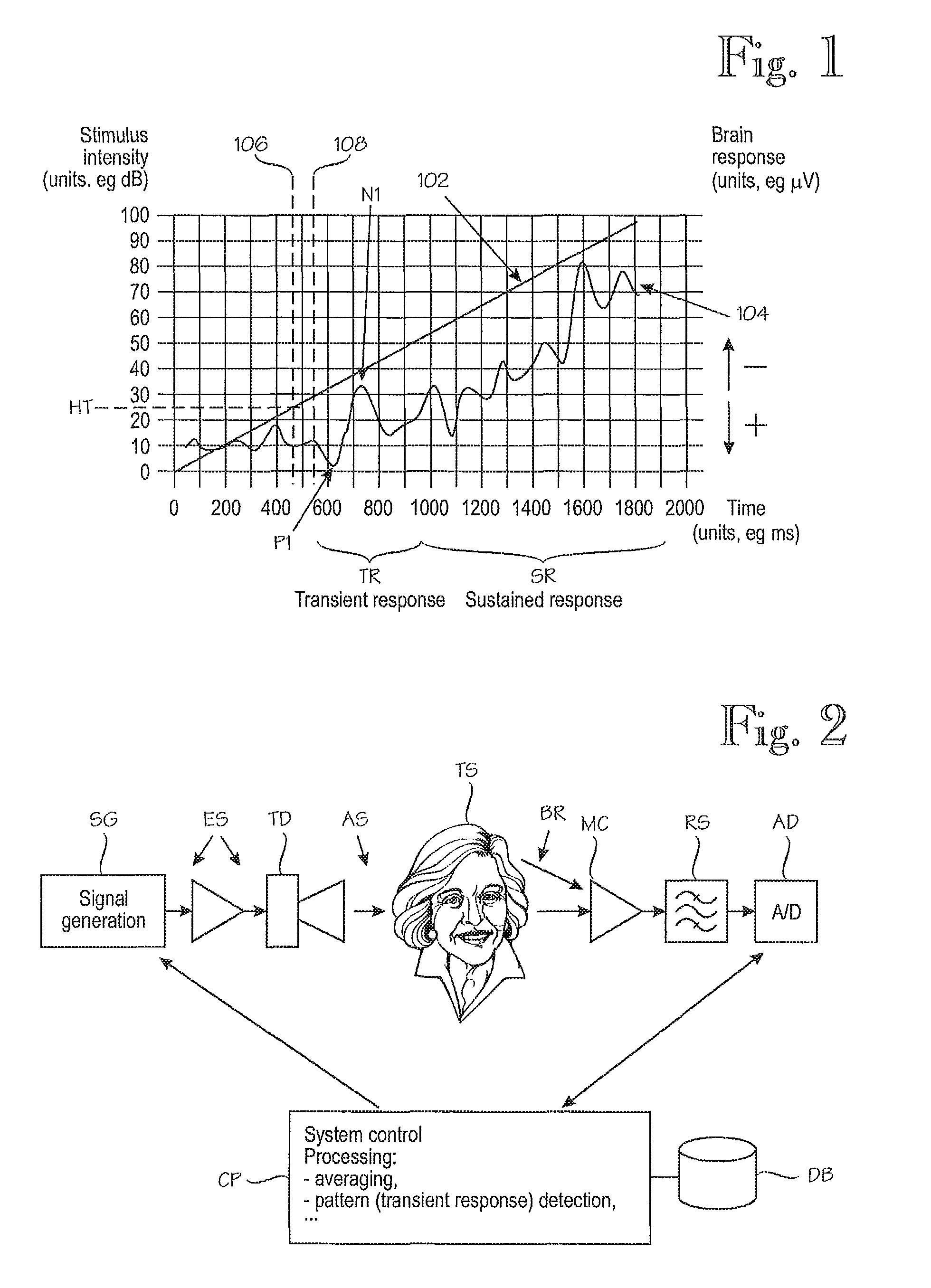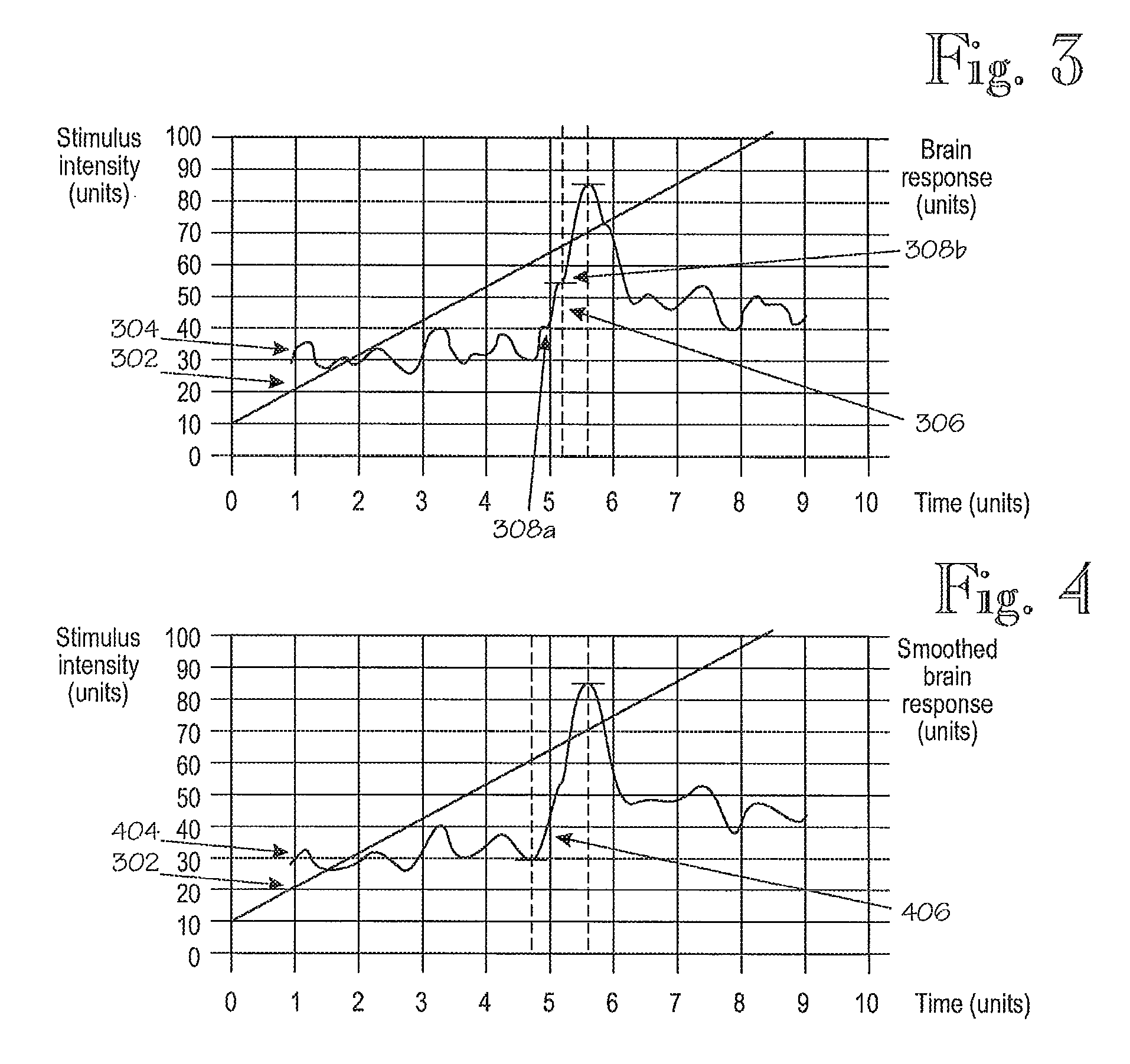Techniques for determining hearing threshold
a technology of hearing threshold and inclination, which is applied in the field of noninvasively determining a hearing threshold, can solve the problems of too much variation in the intensity of corresponding stimulus, too much slope, and too much inaccuracy in determining timing-related parameters, so as to reduce timing-related inaccuracy, accurate estimation of the hearing threshold, and large errors in the hearing threshold.
- Summary
- Abstract
- Description
- Claims
- Application Information
AI Technical Summary
Benefits of technology
Problems solved by technology
Method used
Image
Examples
Embodiment Construction
[0034]Specific embodiments of the invention will be described. Most of the description is based on the assumption that the measured brain response is EEG response. An MEG response could be measured equally well, but MEG equipment is more expensive than EEG equipment.
[0035]FIG. 1 shows some key concepts relating to the invention. Reference numeral 102 denotes an acoustic stimulus. Considering the logarithmic nature of human hearing, a preferred form of the acoustic stimulus 102 contains a rising ramp in which the slope expressed in decibels per unit of time is constant or at least approximately constant. Alternatively, the ramp could be created in another suitable domains applying compression functions such as cubic root which approximates hearing even better than logarithmic function. Reference numeral 104 denotes the test subject's brain response, which in this particular example is an EEG response. It is customary to present EEG graphs such that positive voltage fluctuations are t...
PUM
 Login to View More
Login to View More Abstract
Description
Claims
Application Information
 Login to View More
Login to View More - R&D
- Intellectual Property
- Life Sciences
- Materials
- Tech Scout
- Unparalleled Data Quality
- Higher Quality Content
- 60% Fewer Hallucinations
Browse by: Latest US Patents, China's latest patents, Technical Efficacy Thesaurus, Application Domain, Technology Topic, Popular Technical Reports.
© 2025 PatSnap. All rights reserved.Legal|Privacy policy|Modern Slavery Act Transparency Statement|Sitemap|About US| Contact US: help@patsnap.com



